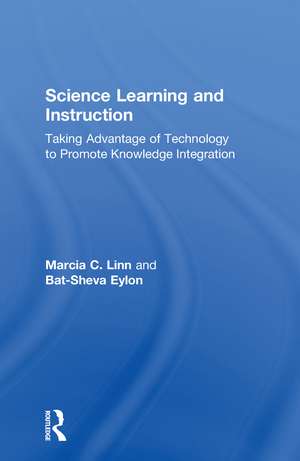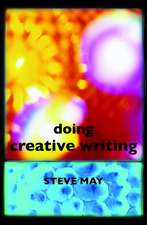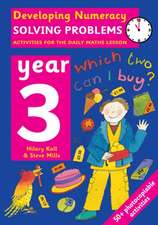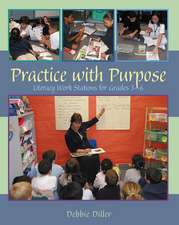Science Learning and Instruction: Taking Advantage of Technology to Promote Knowledge Integration
Autor Marcia C. Linn, Bat-Sheva Eylonen Limba Engleză Hardback – 11 apr 2011
| Toate formatele și edițiile | Preț | Express |
|---|---|---|
| Paperback (1) | 451.72 lei 6-8 săpt. | |
| Taylor & Francis – 11 apr 2011 | 451.72 lei 6-8 săpt. | |
| Hardback (1) | 1122.29 lei 6-8 săpt. | |
| Taylor & Francis – 11 apr 2011 | 1122.29 lei 6-8 săpt. |
Preț: 1122.29 lei
Preț vechi: 1368.65 lei
-18% Nou
Puncte Express: 1683
Preț estimativ în valută:
214.74€ • 224.82$ • 177.69£
214.74€ • 224.82$ • 177.69£
Carte tipărită la comandă
Livrare economică 05-19 aprilie
Preluare comenzi: 021 569.72.76
Specificații
ISBN-13: 9780805860542
ISBN-10: 0805860541
Pagini: 360
Ilustrații: 30 Line drawings, black and white; 20 Halftones, black and white; 22 Tables, black and white
Dimensiuni: 152 x 229 x 21 mm
Greutate: 0.83 kg
Ediția:1
Editura: Taylor & Francis
Colecția Routledge
Locul publicării:Oxford, United Kingdom
ISBN-10: 0805860541
Pagini: 360
Ilustrații: 30 Line drawings, black and white; 20 Halftones, black and white; 22 Tables, black and white
Dimensiuni: 152 x 229 x 21 mm
Greutate: 0.83 kg
Ediția:1
Editura: Taylor & Francis
Colecția Routledge
Locul publicării:Oxford, United Kingdom
Notă biografică
Marcia C. Linn is a professor of development and cognition specializing in education in mathematics, science, and technology in the Graduate School of Education at the University of California, Berkeley.
Bat-Sheva Eylon is a professor at the Science Teaching Department at the Weizmann Institute of Science, Israel. She specializes in learning, instruction, and professional development of physics and science teachers. She holds the Chief Justice Bora Laskin Chair of Science Teaching.
Bat-Sheva Eylon is a professor at the Science Teaching Department at the Weizmann Institute of Science, Israel. She specializes in learning, instruction, and professional development of physics and science teachers. She holds the Chief Justice Bora Laskin Chair of Science Teaching.
Recenzii
"This book is a must read for all teachers, pre–service to decades of experience; of all age groups, from elementary school to college; and for those even thinking about becoming a science teacher. It is, simply put, the best, most informative teaching science instructional resource available. I have been looking for a book like this for years, and now I can happily say, definitively, this is it." — National Science Teachers Association
"This book [is] useful to educational technology and curriculum and instruction scholars and specialists because it includes reviews of historical and contemporary research.... The thoughtful overview of literature, science pedagogy, KI patterns, and classroom examples of information technology may help designers, who lack teaching experience, understand classroom dynamics and best practices." — Teachers College Record
"This book is a good source for graduate students, teachers, researchers and curriculum designers to reflect and construct a different educational environment in the classroom that is conductive toward an exploration of the ‘wonder of science’." — Science & Education Journal
"This book [is] useful to educational technology and curriculum and instruction scholars and specialists because it includes reviews of historical and contemporary research.... The thoughtful overview of literature, science pedagogy, KI patterns, and classroom examples of information technology may help designers, who lack teaching experience, understand classroom dynamics and best practices." — Teachers College Record
"This book is a good source for graduate students, teachers, researchers and curriculum designers to reflect and construct a different educational environment in the classroom that is conductive toward an exploration of the ‘wonder of science’." — Science & Education Journal
Cuprins
Chapter 1 – Introduction and Overview Chapter 2 – Typical Instructional Patterns Chapter 3 – Transforming Science Instruction with Technology: A Thermodynamics Case Study Chapter 4 – Particulate Structure of Matter: A Case Study Chapter 5 – Knowledge Integration Principles and Patterns Chapter 6 – Lectures and Technology Chapter 7 – Experimentation and Knowledge Integration Chapter 8 – Making Visualizations Valuable Chapter 9 – Collaboration for Knowledge Integration Chapter 10 – Professional Development for Knowledge Integration Chapter 11 – The Case for Knowledge Integration
Descriere
This book describes advances in understanding the nature of science learning and their implications for the design of science instruction, showing how design patterns, design principles, and professional development opportunities coalesce to create and sustain effective instruction.











